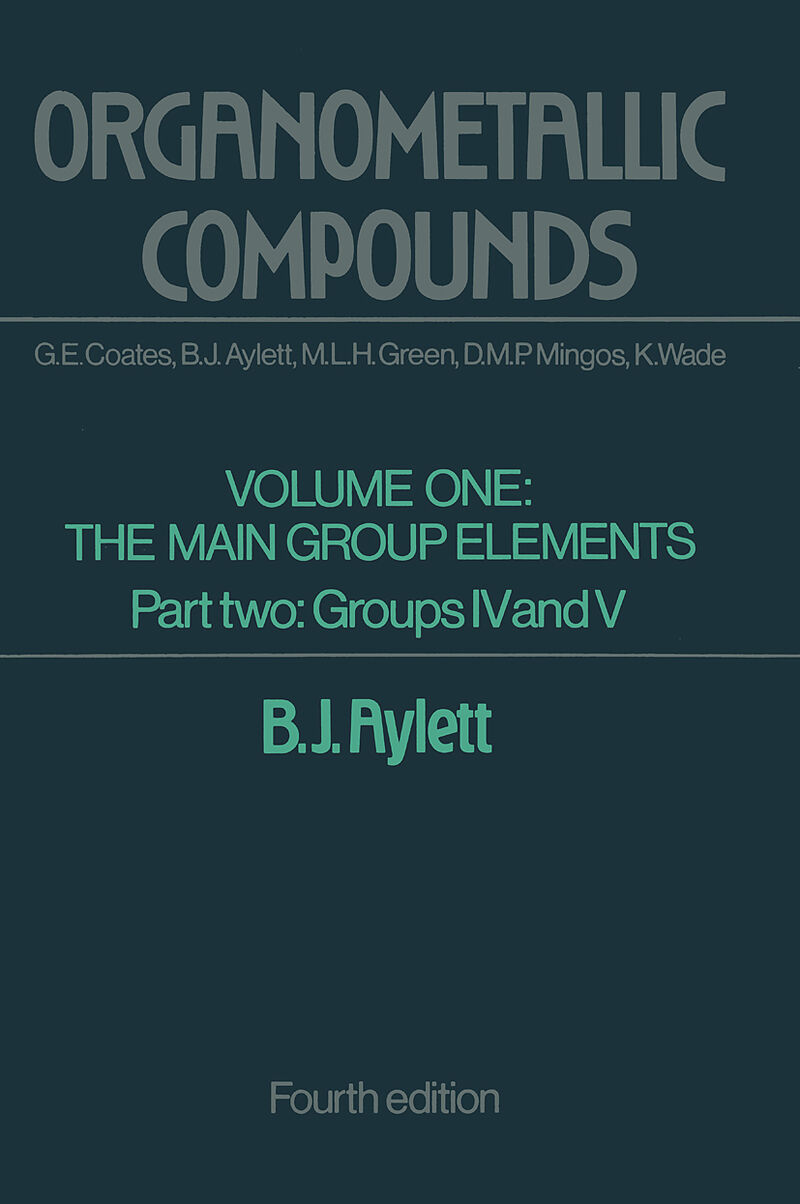Organometallic Compounds
Einband:
Kartonierter Einband
EAN:
9789400957312
Untertitel:
Volume One The Main Group Elements Part Two Groups IV and V
Autor:
B. J. Aylett
Herausgeber:
Springer Netherlands
Auflage:
Softcover reprint of the original 1st ed. 1979
Anzahl Seiten:
540
Erscheinungsdatum:
12.02.2012
ISBN:
9400957319
A very large number of organo derivatives is formed by the Group IV ele ments silicon, germanium, tin, and lead. In comparing the general properties of these elements, Table 1. 1 shows that the first ionization energies decrease (though not in a regular way) with increase in size and atomic number, con sistent with the general increase in metallic character of the elements. Electro negativity values (which have been the subject of considerable controversy) show no clear trend. Although purely inorganic compounds of tin(n) and leaden) are well known, almost all organo Group IV derivatives show an oxidation state of IV. Bonds to carbon become weaker on passing from silicon to lead, as do the element-element bonds themselves. With any particular element M (M = Si, Ge, Sn, or Pb), there is a small decrease in bond energy in the order: M-Ph > M - Me > M - Et. Although accurate data for organo derivatives are lacking, strengths of bonds to other elements probably decrease in the order: M-F> M-O > M-CI > M-H ~ M-N ~ M-S ~ M-Br > M-I, while for a particular element X, the order is: Si-X > Ge-X > Sn-X > Pb-X. It is therefore understandable that reactions leading to Si-F, Si-O, or Si-CI bonds are especially favoured in a thermodynamic sense.
Klappentext
A very large number of organo derivatives is formed by the Group IV ele ments silicon, germanium, tin, and lead. In comparing the general properties of these elements, Table 1. 1 shows that the first ionization energies decrease (though not in a regular way) with increase in size and atomic number, con sistent with the general increase in metallic character of the elements. Electro negativity values (which have been the subject of considerable controversy) show no clear trend. Although purely inorganic compounds of tin(n) and leaden) are well known, almost all organo Group IV derivatives show an oxidation state of IV. Bonds to carbon become weaker on passing from silicon to lead, as do the element-element bonds themselves. With any particular element M (M = Si, Ge, Sn, or Pb), there is a small decrease in bond energy in the order: M-Ph > M - Me > M - Et. Although accurate data for organo derivatives are lacking, strengths of bonds to other elements probably decrease in the order: M-F> M-O > M-CI > M-H ~ M-N ~ M-S ~ M-Br > M-I, while for a particular element X, the order is: Si-X > Ge-X > Sn-X > Pb-X. It is therefore understandable that reactions leading to Si-F, Si-O, or Si-CI bonds are especially favoured in a thermodynamic sense.
Inhalt
Group IV Silicon, Germanium, Tin, and Lead.- 1 Introduction.- 2 Silicon.- 3 Germanium.- 4 Tin.- 5 Lead.- References: Group IV.- V Arsenic, Antimony, and Bismuth.- 6 Introduction.- 7 Arsenic.- 8 Antimony.- 9 Bismuth.- References: Group V.

Leider konnten wir für diesen Artikel keine Preise ermitteln ...
billigbuch.ch sucht jetzt für Sie die besten Angebote ...
Die aktuellen Verkaufspreise von 6 Onlineshops werden in Realtime abgefragt.
Sie können das gewünschte Produkt anschliessend direkt beim Anbieter Ihrer Wahl bestellen.
Loading...
Die aktuellen Verkaufspreise von 6 Onlineshops werden in Realtime abgefragt.
Sie können das gewünschte Produkt anschliessend direkt beim Anbieter Ihrer Wahl bestellen.
| # | Onlineshop | Preis CHF | Versand CHF | Total CHF | ||
|---|---|---|---|---|---|---|
| 1 | Seller | 0.00 | 0.00 | 0.00 |
